Masterpiece Story: Portrait of Madeleine by Marie-Guillemine Benoist
What is the message behind Marie-Guillemine Benoist’s Portrait of Madeleine? The history and tradition behind this 1800 painting might explain...
Jimena Escoto 16 February 2025
6 October 2024 min Read
Anne Vallayer-Coster was one of the foremost still-life painters in 18th-century France. She was enormously prolific and extremely popular. Her works were highly esteemed among private collectors and public institutions. Vallayer-Coster displayed at the Salon de Paris, gained admittance to the Académie Royale de Peinture et de Sculpture, and earned Queen Marie Antoinette’s official patronage. Anne Vallayer-Coster represents the great but often overlooked legacy of female artists. Still Life with Mackerel is one of her most fabulous paintings. It is a masterpiece of color, composition, and imitation.
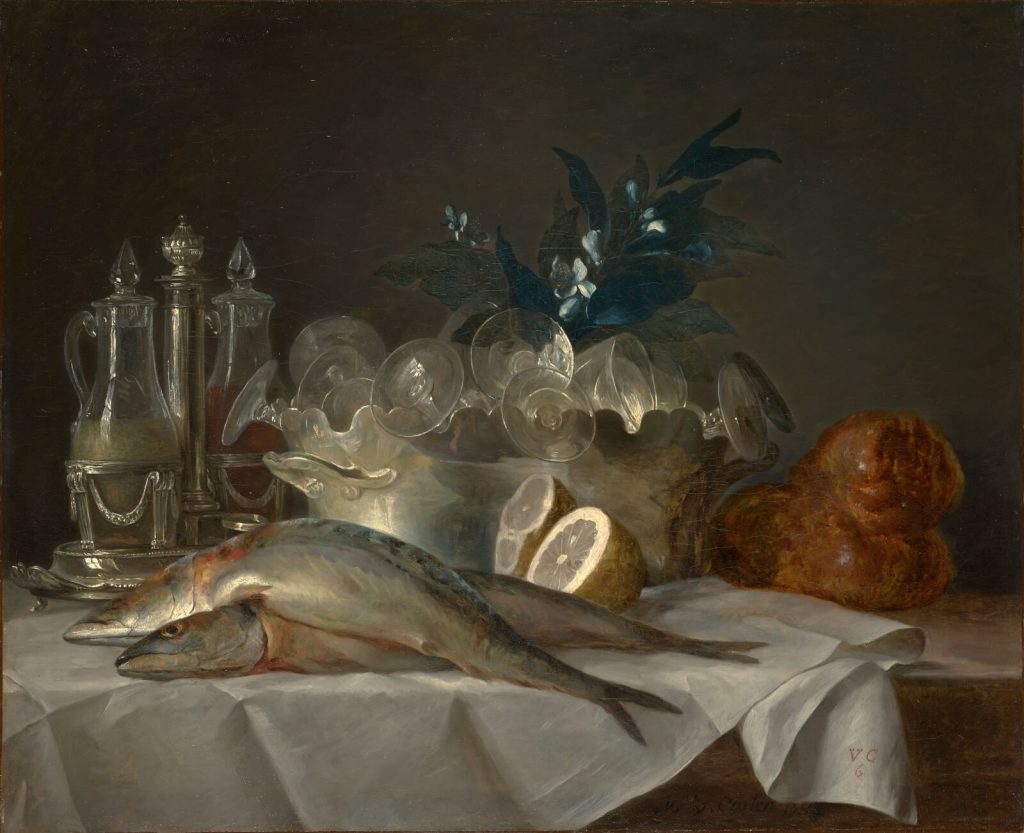
Anne Vallayer-Coster painted Still Life with Mackerel in 1787, near the end of the Ancien Régime and the beginning of the French Revolution of 1789. What she captures in Still Life with Mackerel is the elegant but restrained opulence of this soon-to-be vanished world. A simple but sumptuous feast dominates the composition. Expensive items are artfully arranged to tell an anecdote of wealth and luxury.
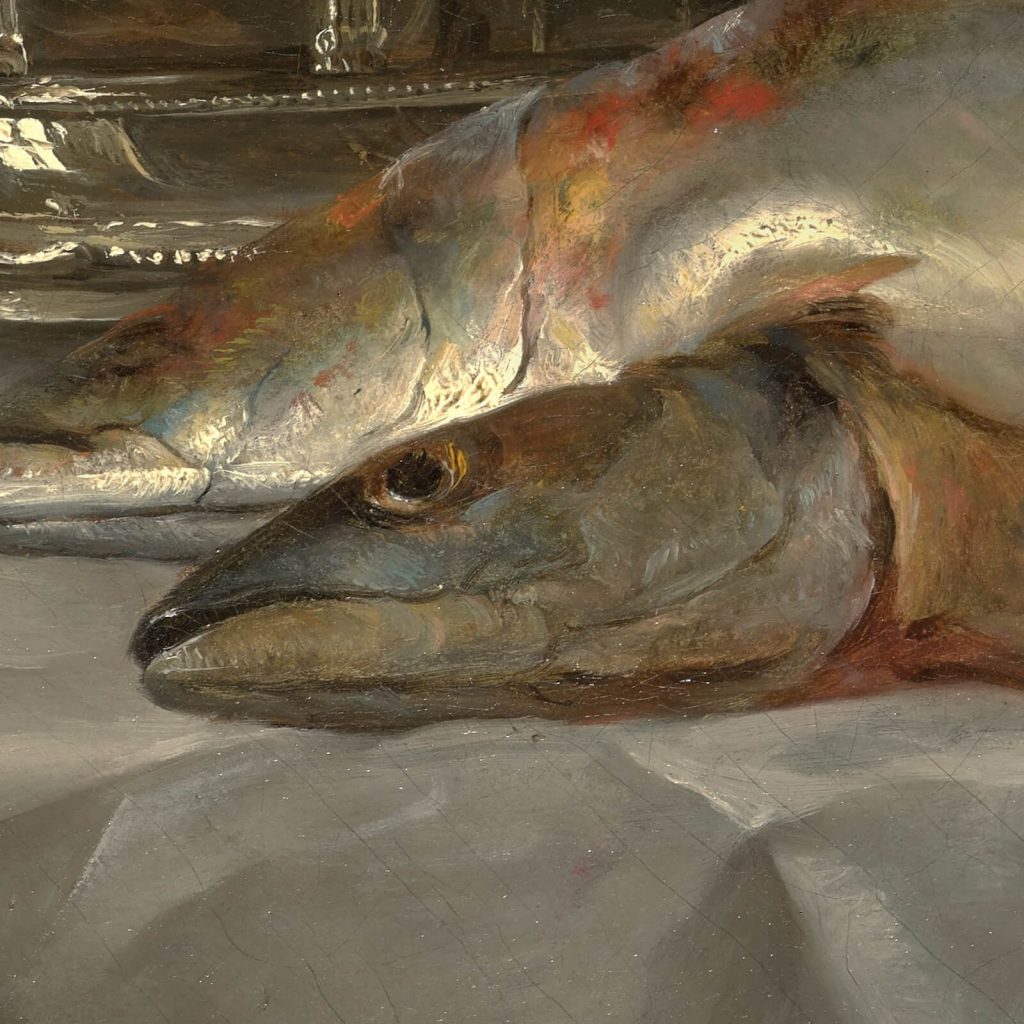
Still Life with Mackerel celebrates the Spring arrival of mackerel fish in Paris. The oily and delicious fish are caught off the northern shores of Normandy and then quickly transported to Paris by riverboats. Mackerel is a fish that spoils easily and therefore the freshest specimens were considered a rare delicacy. Only wealthy Parisians could indulge in fresh mackerel, whereas less affluent citizens had to accept pickled and salted choices. Therefore, fresh fish is a rare subject in the still-lifes of 18th-century France. It was definitely more common to view images of poultry and game, fruits and vegetables, and flowers. Hence, Anne Vallayer-Coster rejoices in an expensive and artistically rare subject in Still Life with Mackerel.
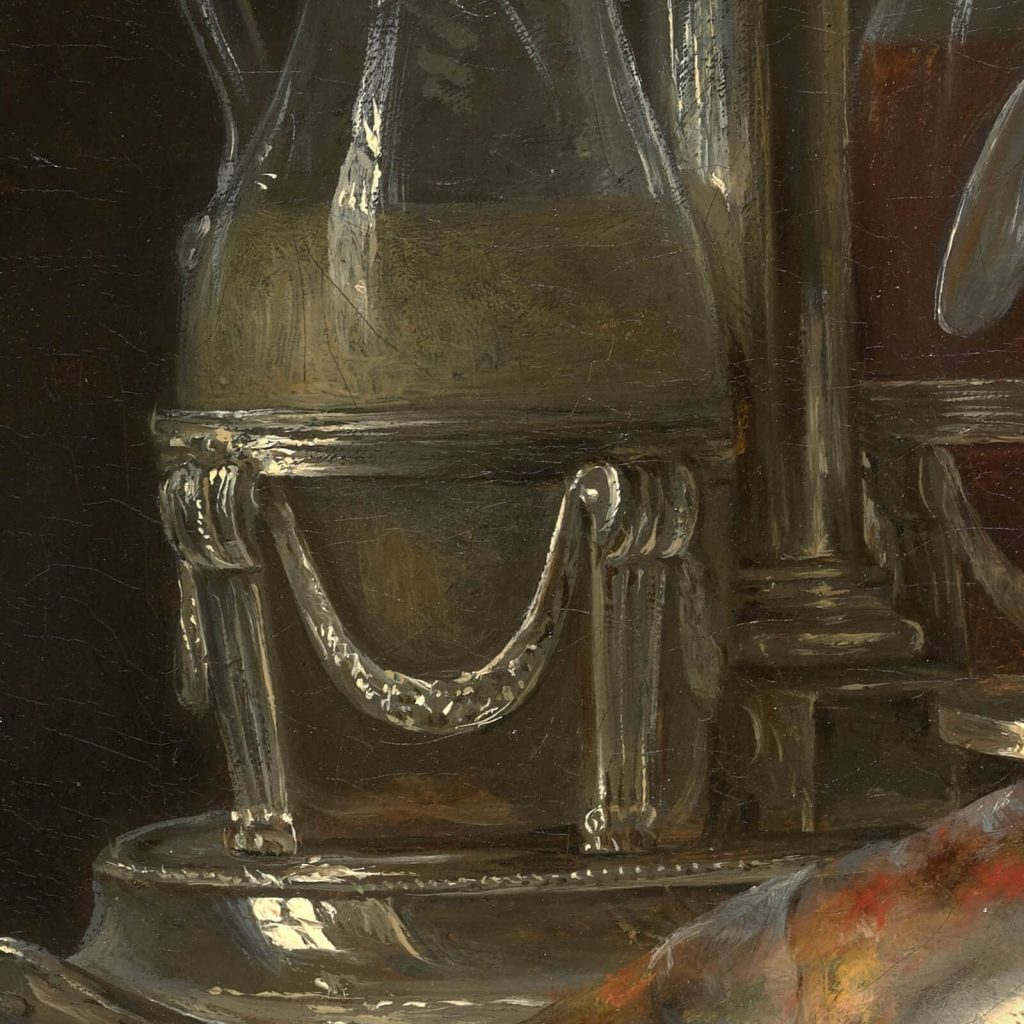
Dominating the left side of Still Life with Mackerel is a silver cruet stand with two glass bottles containing oil and vinegar. This expensive piece of tableware is fashioned in the latest Neoclassical style, popular in the last years of the French monarchy under King Louis XVI. The central body of the silver stand is a Doric column with an urn atop its capital. This urn acts as a handle to lift and carry the cruet set. The two glass jars have simple bodies with equally simple handles and stoppers. However, their bases are contained within silver guards of the utmost elegance. Delicate swags of silver drape between the legs of the guards and form a fluidity encircling the bottles. The overall effect is of controlled magnificence anchoring the left side of Still Life with Mackerel.
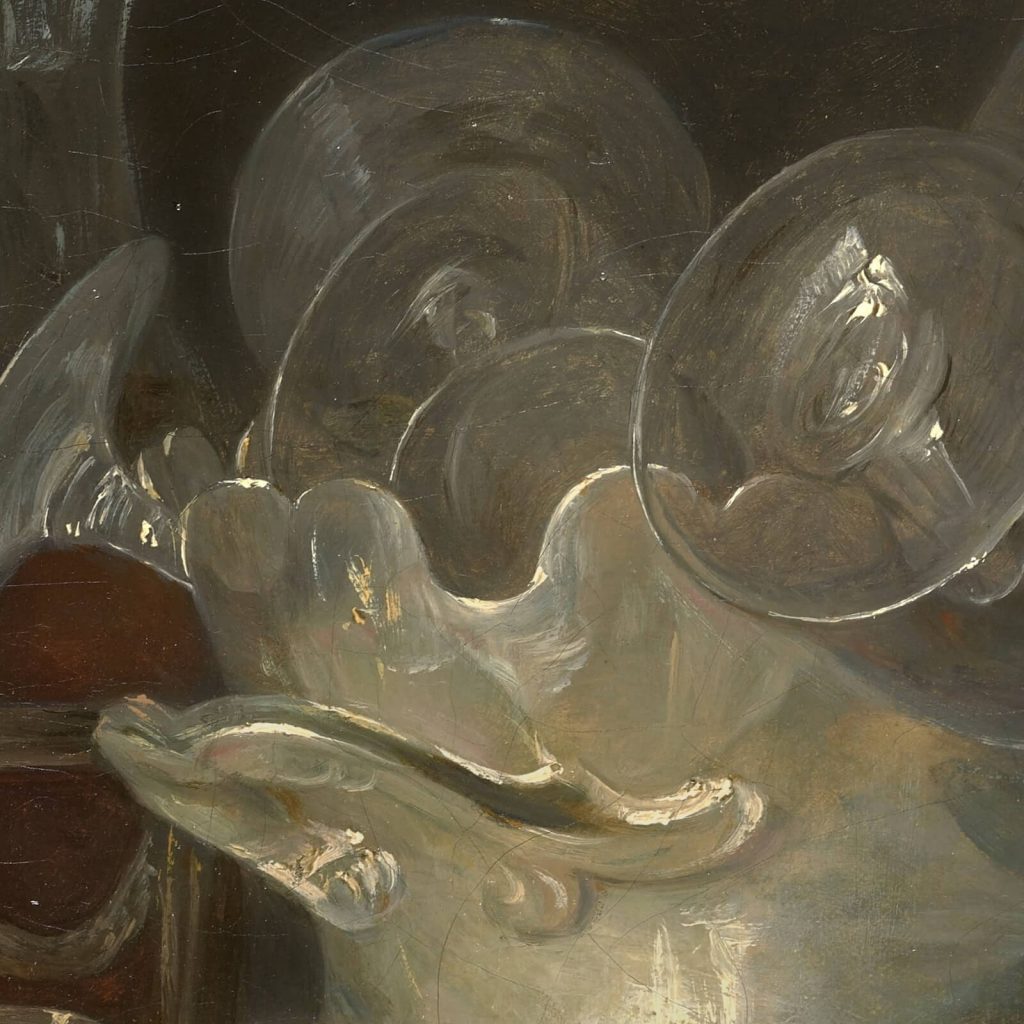
Anne Vallayer-Coster depicts a silver verrière or wine glass cooler in the centre of Still Life with Mackerel. It is filled with crystal stemmed glasses, with at least ten easily distinguished bases emerging from the verrière. Such a large piece of silverware was often used in a celebratory event such as a party or feast. With the size to easily hold one dozen glasses, this silver verrière implies and anticipates a social gathering of many guests. The wine cooler has the luminosity of polished silver. It reflects the halved lemon before its base with a distorted mirror-like image. Various shades of grey blend and ripple over the cooler’s surface. The silver verrière adds metallic richness to Still Life with Mackerel.
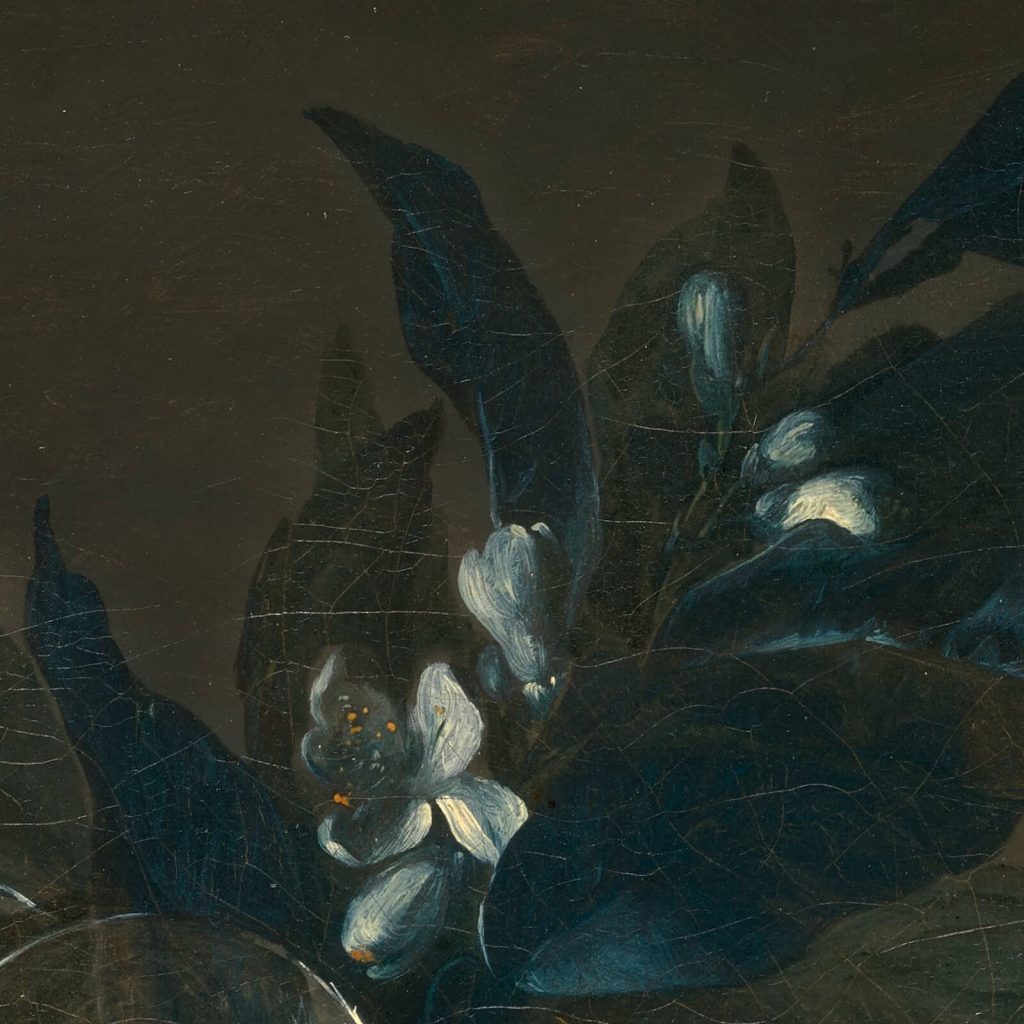
Above the verrière we see a sprig of orange blossom. This flowering branch symbolizes springtime and enhances the painting’s seasonality as announced by the mackerel below. It has both visual and olfactory appeal. Orange blossom releases the most exquisite scent during the springtime. It is a note still used in many expensive perfumes. Imagine how this flower’s scent would combine with the lemon’s scent. The floral and citrus mélange would be simply divine! Now imagine the warm smell of freshly baked bread (or specifically brioche) as depicted in Still Life with Mackerel. Add this mouthwatering note to the natural perfume forming in this banquet scene. Don’t be worried about the fish. Remember, it is still fresh. Fresh fish does not smell, but there is a subtle hint of saltwater. Like sea salt added to fine caramels, the faint saltwater adds a delectable richness. Therefore what we smell is the singularly beautiful scents of flowers, fruit, bread, and a hint of salt combining into a palatable sensation. Close your eyes and imagine this natural perfume. Delicious. Anne Vallayer-Coster certainly knows how to make us hungry.
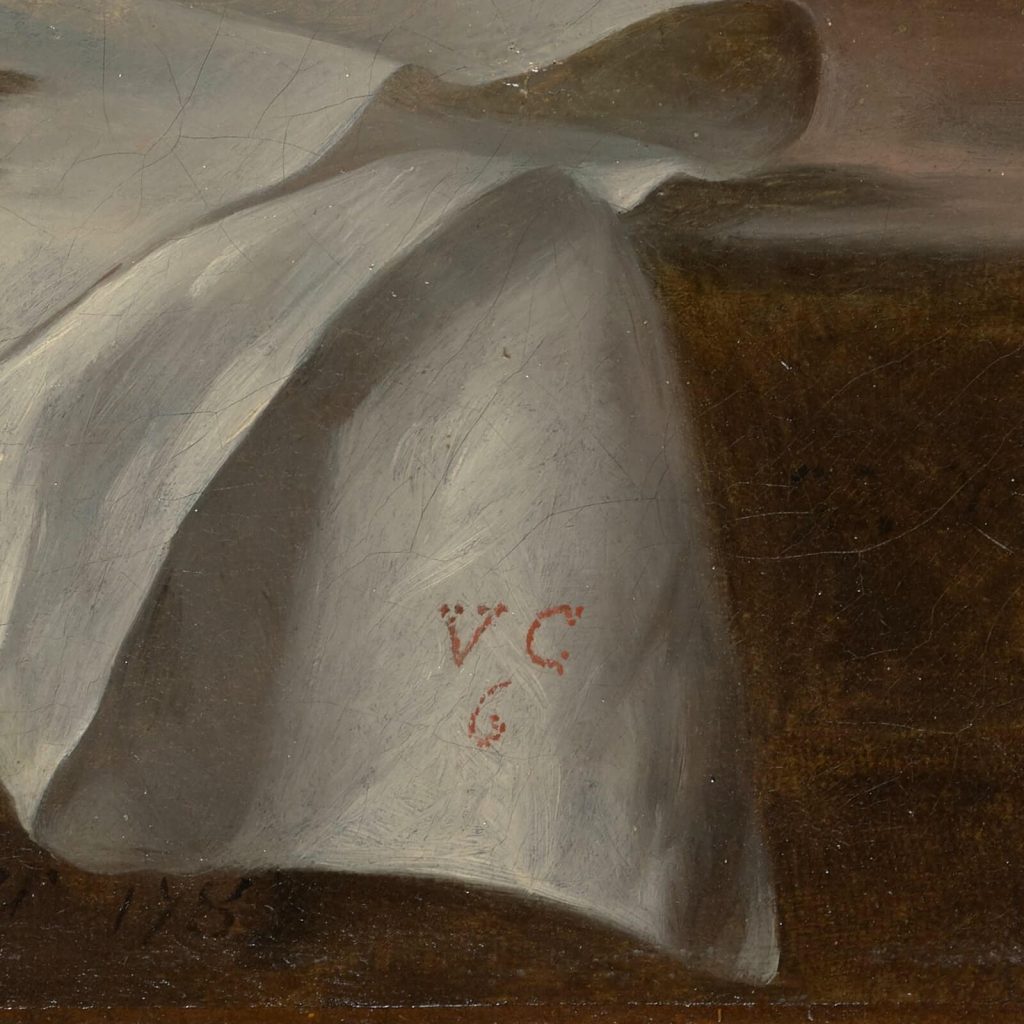
Anne Vallayer-Coster was certainly a masterful painter. She was also proud of her domestic management. The white linen cloth spread over the stone parapet explains this hidden pride. Do you notice the folds? With our modern eyes, we see someone who forgot to iron the tablecloth before laying the feast. What sloppiness! However, with 18th-century French eyes, these pressed folds imply a well-run household. They are a badge of honor for good housekeeping. They signify the housekeeper has folded and ironed the tablecloth before storing it. On the corner of the white cloth, embroidered in red thread, are the letters “V” and “C” and the number “6.” The letters are the initials for “Vallayer-Coster” and the number signifies this is the 6th tablecloth of the Vallayer-Coster household. The tablecloth is essentially registered and inventoried! Therefore, the linen’s embroidery and lines imply method and order in Still Life with Mackerel. I think even Martha Stewart could appreciate that it’s a good thing.
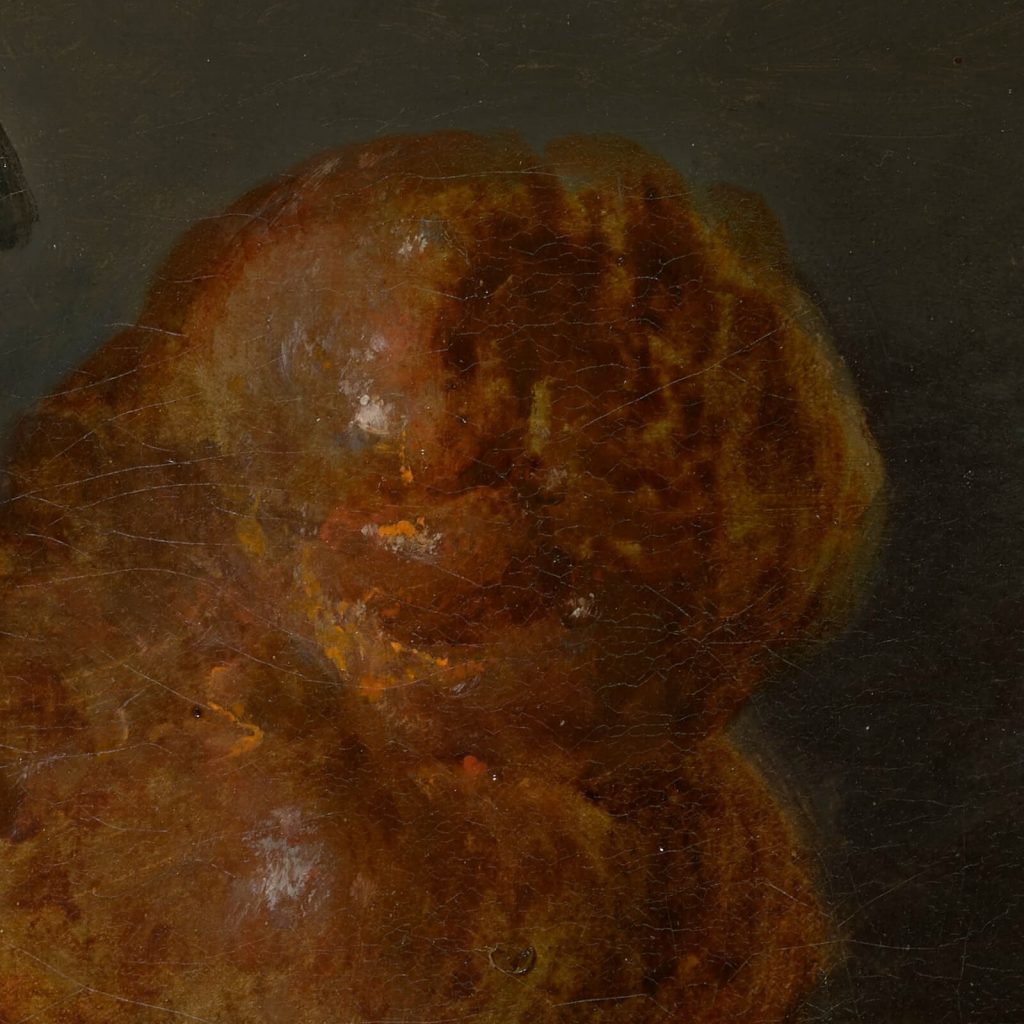
Anne Vallayer-Coster was accepted into the Académie royale de peinture et de sculpture in 1770 when she was only 26 years old. When she painted Still Life with Mackerel she was 43 years old. Therefore, we see the culmination of 17 years of formal recognition and training. Ironically, little is known of Vallayer-Coster’s training prior to her entrée to the Académie. Many scholars believe she was self-taught, as no records survive suggesting she received any formal training. However, this perceived disadvantage may actually have been an advantage in her formative years. Vallayer-Coster developed a style that is more anecdotal and less austere than Jean-Baptiste-Siméon Chardin, the icon of the 18th-century French still-life. Vallayer-Coster has a signature style that is honest, insightful, and sympathetic. While she is remembered for her still-lifes of flowers and objects, she also painted portraits and applied her sensitivity to her sitters too.
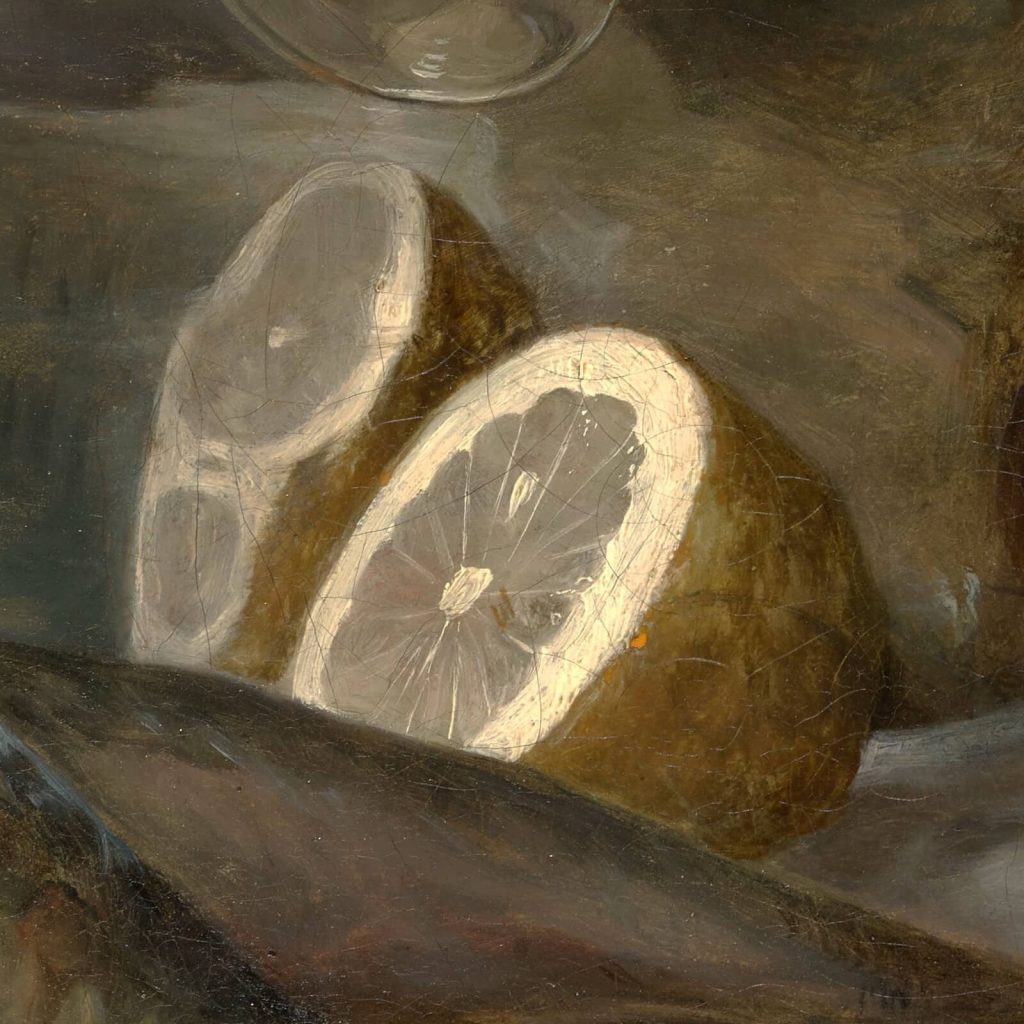
Still Life with Mackerel is more complex than what first-glance assumptions may provide. It explores the cool and silvery tones as they vary according to materials and reflections. The tonality changes as it moves across glass, metal, and flesh. Hushed lighting and mellow colors highlight the objects against a dark background. Anne Vallayer-Coster creates a subdued charm reinforced by the simplicity of the composition. She paints a mood of quiet observation and detailed attention. Still Life with Mackerel tells the story of luxurious domesticity. Anne Vallayer-Coster is a poetess of still life and a master of its nuances.
Anne Vallayer-Coster Acquisition, News. Kimbell Art Museum. Retrieved March 10, 2021.
Helen Gardner, Kleiner, Fred S., and Mamiya, Christin J., Gardner’s Art Through the Ages. 12th ed. Belmont, CA: Wadsworth, Thomson, 2005.
Michael Levey, Painting & Sculpture in France 1700-1789. New Haven, CT: Yale University Press, 1993.
Still Life with Mackerel, Collection; Kimbell Art Museum. Retrieved March 10, 2021.
DailyArt Magazine needs your support. Every contribution, however big or small, is very valuable for our future. Thanks to it, we will be able to sustain and grow the Magazine. Thank you for your help!